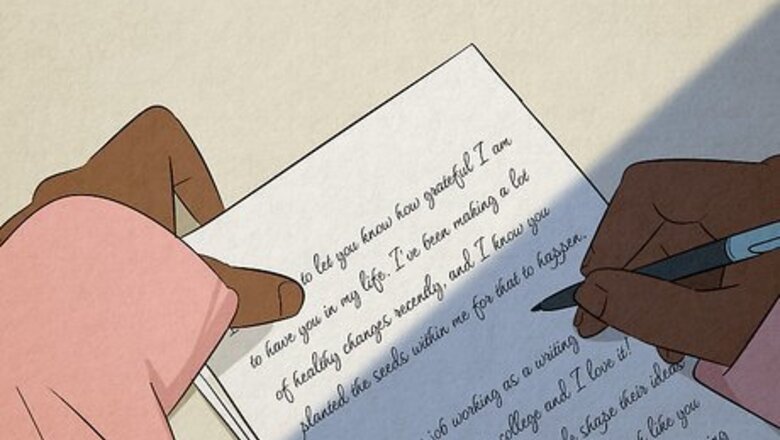
views
Letter-Writing Basics
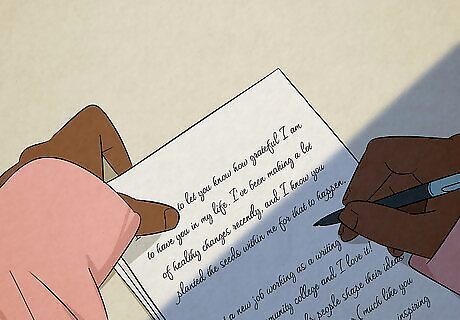
Put it on paper. A handwritten letter conveys sincerity from the moment it arrives. Your reader knows you mean it. You have to wait a few days, but this usually isn't bad. The payoff is worth the delay. If you can't write a hand-written letter, for some reason, then word-process it and print it out if at all possible. E-mails aren't usually the best way to have serious, heart-felt communications, but it'll also be fine in a pinch if it's necessary. Just make sure your copyedit all e-mails and follow the rules of usage and grammar, as if you were writing for school.
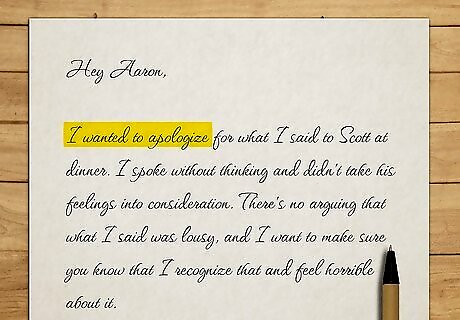
Consider your audience. To begin, think about the person you are writing to and why you want to write them a letter. Is it an apology? A thank you? An invitation? Condolences? Whatever it is, make sure you know why you are writing to this person. If you don't know why you're writing the letter, the won't know why they are reading it. What are your intentions for the letter? It's also very important that your biggest goal is to express yourself, not to induce a certain outcome. For example, if you are writing a love letter, your goal is to express how much you care about this person. Your goal in writing this letter isn't to start a relationship, so don't write to them as if that's your goal.

Do a little pre-writing. For some it is easy it just spill out what is felt on the inside. In order for your writing to have any meaning you need to focus on your truthful feelings and emotion. On a piece of scratch paper or a notepad that's sitting around consider who you are writing your letter to and the topic of the letter. No matter how heartfelt you are in your writing, if the person receiving the letter does not see the importance of what you are trying to get across they may not respond the way you would like them to. Once you have full confidence in what you want to say and you get your thoughts all sorted out start writing.

Open the letter clearly. Don't beat around the bush. Start your letter by telling them why you are writing them a letter. If you already know, it's important to share the reason with your reader. Write something like: "I'm writing to you because I haven't seen you in so long. I miss you and want to catch up." Formatting-wise, begin the letter by writing "Dear _____," at the top of the letter, adding in their name or names. This works, regardless of your intentions in writing the letter, or if you're writing for multiple reasons: "I heard about the passing of your mother, and I am so very sorry."
Knowing What to Say
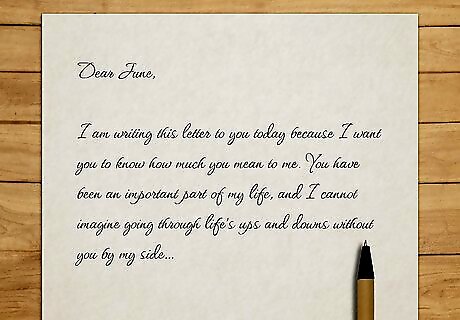
Share your feelings with your reader. If you're writing an apology, you might feel scared that they're still angry or worried that you hurt them too badly to recover a relationship. If you're writing a thank you, you might feel grateful to have friends who care about you. If you're writing an invitation, you might feel excitement at the thought of spending time together. Whatever it is that you're feeling, express that here.
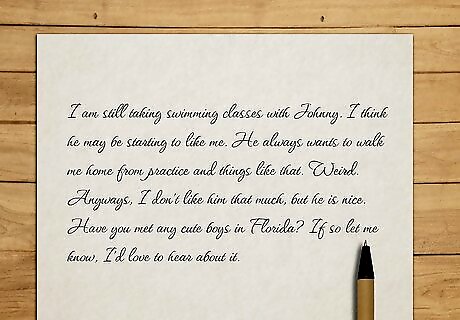
Have some moments of lightness as well. If someone has passed away, you can write a funny or nice thing you remember about the deceased. If you're trying to reconnect with someone after a long time, you might want to share a story about something that's happened to you recently. A heartfelt letter does not have to be serious the whole way through, although sometimes they might be. When thinking about a story, ask yourself if this is something you truly want to share with them. If you do, it'll come across on paper. If you don't or don't feel like a story is appropriate, leave it out.
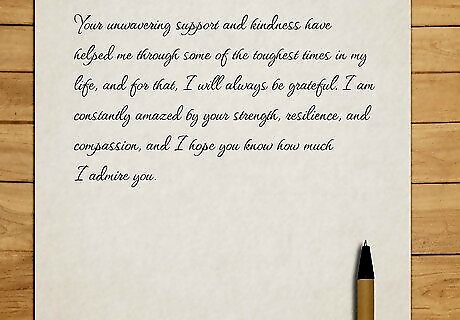
Talk about them. Truth is, even the sincerest, most loving people think about themselves a lot and like to hear about themselves. If you put important stuff in the middle of a ramble about your life, your news, your feelings, your reader may miss it and get the wrong message. Bad! If your feelings are an important subject in the letter, state them succinctly. If possible draw connections to your reader's role in those feelings. Don't assume you know your reader's feelings. "I hope you feel..." is fine. So is "If you feel..." "I know you feel..." is not. Give them room to have their own feelings.
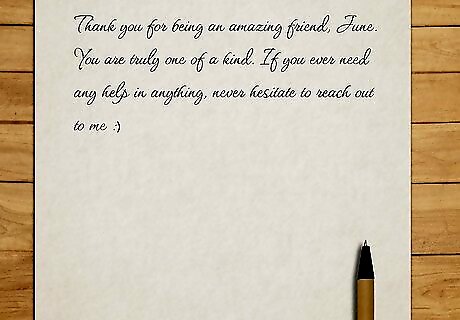
Offer your support, if necessary. If this person is going through something difficult, you might want to let them know that you are there and want to offer your support. Be specific if you can. You can say something like "Give me a call whenever you like," or "Let me know if there's anything around the house that needs doing." If you're writing an apology, you can offer them your regret and willingness to listen. No matter why you are writing, make sure that your offer is sincere. It should be something you truly think they might need or like, otherwise it'll come off as hollow. Think of this as a chance to extend yourself toward them. It's up to them whether they want to grab your hand and talk, meet up, join you, accept help, forgive or whatever their reaction might be. This way, they know that you aren't offering empty words, and they might feel more comfortable reaching out. While writing a condolence letter, express remorse for the person. Let the person who has suffered the loss know you are available and willing to support them. If a company or somebody in business is writing a condolence letter to a client, they should sympathize with them but not express much emotional vulnerability within the letter.
Getting the Right Style
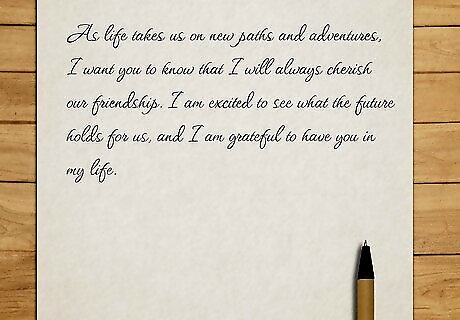
Use strong words specific details. The most important thing when you're writing any letter is to use not fancy words, complicated words, or long words, but to use the right words. Writing your heart out means that you need to use correct words to express what you're feeling. Use vivid details to make your intentions clear. It's good to use good words, but don't get addicted to the thesaurus. Sometimes, saying that you were out for a "stroll" might be the most appropriate word, but most of the time calling it a "walk" will be a lot better.
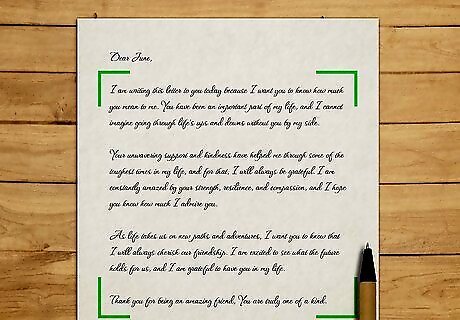
Keep it short. Letters are best when they're clear, concise, and heartfelt. Depending on the purpose of the writing and the reader, it's usually best to keep most letters to no more than a few pages. Short also encourages a call or meeting, which is good for anything important. There's no right length for a letter. Go as long as the letter takes to express everything that you need to express.
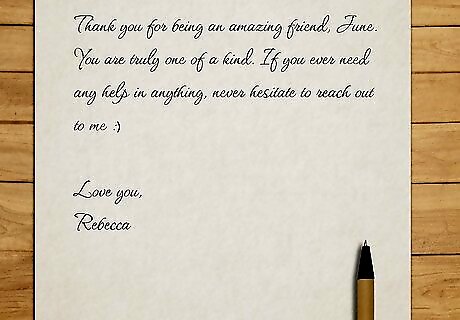
End the letter appropriately. To close, think of an appropriate salutation. Sincerely is always good, as is "Yours sincerely." If you are close, you can use "Love." Other choices might be "Your friend," "With gratitude," "Thinking of you," or "Thank you." This is one more opportunity to express your feelings to them. Then sign your name, and you have finished your heartfelt letter.

Recopy the letter if necessary. You may go back and read your letter before sending. You can correct, add or take out, but only do so for the sake of clarity and hand-writing. If you're written anything defensive or aggressive, take it out. Even if you are expressing anger, there shouldn't be any aggression in the letter.

















Comments
0 comment